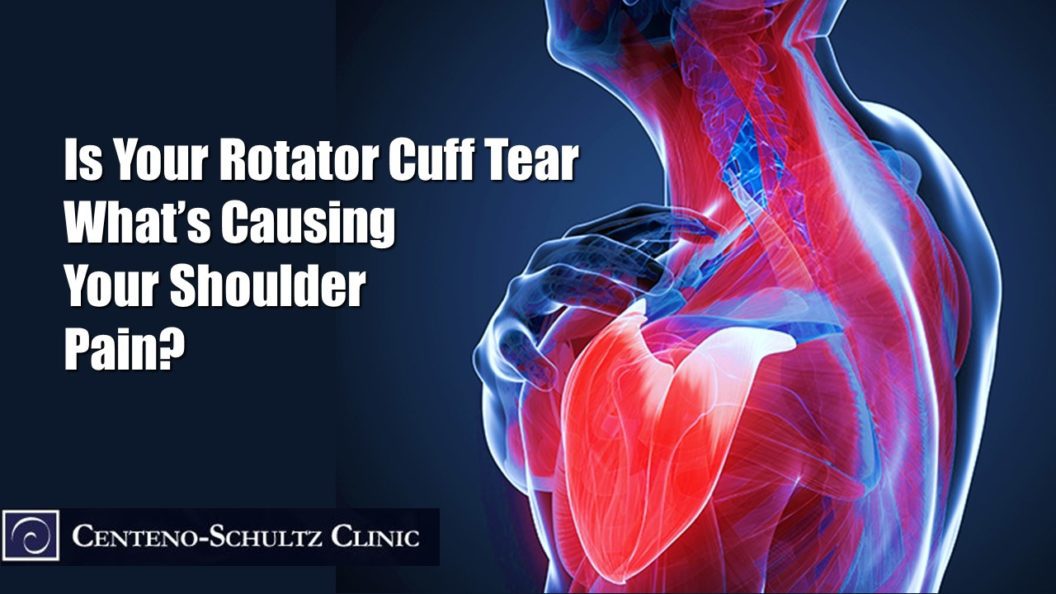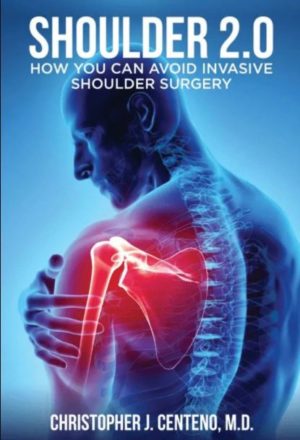When a patient presents to his or her doctor with chronic shoulder pain, the doctor may send the patient for an MRI. If the MRI finds a rotator cuff tear and the doctor diagnoses this as the cause of the shoulder pain, it seems logical enough; few patients would question this finding. However, there’s a big problem with this seemingly obvious approach to diagnosing shoulder pain—MRIs are a great tool for some things, but they are pretty bad at diagnosing the true cause of shoulder pain.
We know this because many times rotator cuff tears don’t hurt, and many people have shoulder pain who don’t have rotator cuff tears. So you could have shoulder pain and a rotator cuff tear on MRI, and the shoulder pain could be due to something else entirely. So today we’re going to reveal three reasons you shouldn’t assume that your rotator cuff tear explains shoulder pain and why diagnosing shoulder pain is much more complex. First, let’s define rotator cuff tears.
Rotator Cuff Tears
The shoulder is made up of a variety of structures, including a complex of tendons and muscles known as the rotator cuff. The rotator cuff provides stability for the ball-and-socket shoulder joint, keeps the ball properly placed in the socket, and provides the strength necessary to lift the arms up above the head, such as when painting a ceiling or reaching for something on a high shelf.
Normal wear and tear with aging or an injury (e.g., a car accident) can cause a tear in the rotator cuff muscle or tendon. Probably the more likely scenario for tearing a rotator cuff would be performing a more strenuous movement than usual, for example pulling a box off of a high shelf that ends up being much heavier than expected.
Regardless of how the rotator cuff becomes torn, accurately diagnosing shoulder pain needs to determine whether or not the tear really is the true source of the pain. So let’s look at the three reasons why you shouldn’t assume your rotator cuff tear explains your shoulder pain (multiple supporting studies for each number below can be found at this link).
1. Shoulder Pain May Be Due to Inflammation Not the Rotator Cuff Tear
Our immune system employs workers called cytokines, and their job is to trigger the alarm when infection, trauma, or inflammation occurs. This alarm calls our immune cells to attention, which then race to the scene and start cleaning up the mess. One of these cytokines is called interleukin 8 (IL-8), and IL-8 is found in the joint fluid and has been associated with more pain according to one study. This is significant because IL-8 is an inflammatory cytokine, so it triggers the alarm when inflammation is detected. So inflammation, not the rotator cuff tear itself, may be the cause of the shoulder pain.
2. Shoulder Pain Is Not Associated with Severity of Rotator Cuff Tears
We also know from the same study above and many others that less pain actually accompanied the larger, more-severe rotator cuff tears. We’ve also seen findings stating that rotator cuff tears and thickness increase with age, but this doesn’t correlate with shoulder pain or the need for surgery to repair the tear. And when there is pain, whether it’s due to the tear or not and regardless of the severity of the rotator cuff tear, physical therapy (PT), in many cases, may be able to address shoulder pain and other symptoms (but review this link to learn about alternatives to PT).
3. Shoulder Pain May Not Be Stopped by Rotator Cuff Surgery
Knowing that the rotator cuff tear may not be the actual cause of shoulder pain should make this one easily understandable. If the tear isn’t causing the pain, certainly surgery isn’t going to stop the shoulder pain nor will it improve shoulder function. Unfortunately, the primary reason most patients give for undergoing shoulder surgery for a rotator cuff tear is pain. So imagine how disheartening this is when these patients are still in pain!
Why Does the Rotator Cuff Wear with Age, and What Can Be Done About It?
The wear and tear in the rotator cuff that occurs as we age is most likely due to nature. Our numbers of local stem cells (the body’s natural repair cells) in the shoulder lessen as we age, making it harder for the shoulder to heal itself. Replacing the local stem cells in the shoulder is critical keeping the shoulder strong and boosting its ability to heal itself, whether the rotator cuff tear or something else is causing the shoulder pain. The key in interventional orthopedics is to find the cause and treat the affected structures—in this case in the shoulder—with precise injections of the patients own platelets or stem cells.
There certainly will be a small minority of candidates with massive rotator cuff tears that can’t be helped with orthobiologic injections and will require surgery (though injections can improve tissues and healing post rotator cuff surgery).
To summarize, accurately diagnosing shoulder pain accurately is key because rotator cuff surgery isn’t going to stop your shoulder pain if your pain isn’t actually due to the tear seen on your MRI, and, in our experience, this covers the majority of rotator cuff and shoulder pain patients. If you are one of the few whose rotator cuff and shoulder pain can’t be helped nonsurgically, stem cell injections may be able to improve your healing process after surgery.

